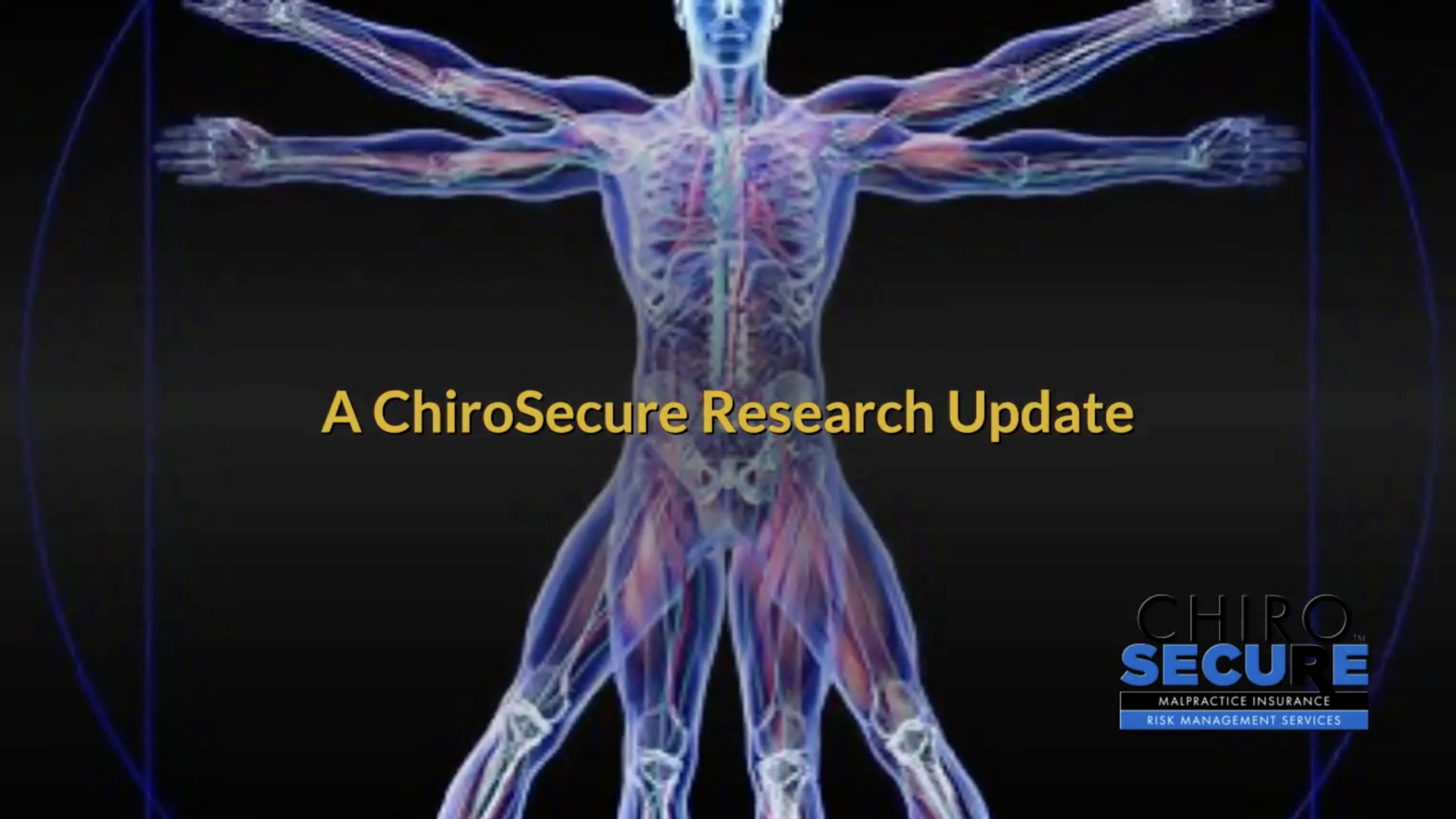Long-term relief from tension-type headache and major depression following chiropractic treatmentA ChiroSecure Research Update
Abstract:
We report the case of a 44-year-old school teacher who experienced long-term relief from tension-type headache (TTH) and major depression following chiropractic treatment.
Recent studies indicated that autonomic dysfunction plays a role in the pathogenesis of TTHs and depressive disorders. The autonomic nervous system is mainly controlled by reflex centers located in the spinal cord, brain stem, and hypothalamus.
Discussion:
A 44-year-old, single, woman presented to the chiropractic office with ongoing headaches of 2-year duration. Her headaches were on a daily basis and varied in intensity. The pain was described as disabling, going across the forehead, to her nuchal area and right shoulder. She could not maintain daily activities without acetaminophen and aspirin. The patient initially consulted her family physician to rule out possible pathological causes. Her blood tests, brain magnetic resonance imaging, and cervical radiographs all came back unremarkable. She was diagnosed with TTH and then sent for physiotherapy a couple of times, but it did not help. She had also tried acupuncture, traditional Chinese therapy, and alternative medications for quite some time; but nothing had changed her headache pattern. She worked as a primary school teacher and lived alone. She denied substance abuse or any systemic disorder. There was no family history of mental illness.
For evaluation and treatment of neck pain and headache, the patient presented to our clinic with a guarded neck posture. She rated her peak headache intensity to be 6–8/10 on the numeric pain rating scale. Spinal ranges of motion indicated restricted in the lower cervical and upper thoracic segments. Palpation revealed spasm of the sternocleidomastoid, suboccipital and cervical paraspinal muscles. Neurological findings of both upper extremities were unremarkable. Radiographs demonstrated mild osteophytes at lower cervical vertebrae and straightened cervical spine of 24° (normal range: 31°–40°) [Figure 1a]. She was diagnosed with cervical spondylosis and TTH. The strategy of chiropractic approach was to stretch and relax the spastic muscles, restore the motion in the respective segments, and rehabilitate sensorimotor integration through neuromuscular facilitations, including diversified spinal manipulation, ultrasound vibration therapy, and home heat pack.
The treatment was commenced 5 times for the 1st week and then shifted to 3 times weekly for the next 3 months. After 3 months, the patient regained confidence in her health and started reducing the dose of medications. She rated her headache as 3–5/10 on the pain scale. The second phase of chiropractic treatment was performed twice a week for another 3 months to restore functions of the spine. All of her symptoms disappeared, and she was able to discontinue all medications after 6 months of adjustment. Sometimes, the patient experienced sharp head pain around the menstrual periods which would eventually be relieved by rest. Having enjoyed headache free and mood stability over the past 6 years, the patient continued maintenance care on a monthly basis. Cervical radiographs taken at 7-year follow-up revealed integrity of the joint and disk and ruled out any pathology.
Conclusion:
This case report describes a long-term relief from chronic headache and improvement in depression with chiropractic in a school teacher. The application of chiropractic services appeared helpful to the outcome of some neuropsychiatric disorders. Further researches to better clarify the role of chiropractic are warranted.
Reference:
Chu ECP, Ng M. Long-term relief from tension-type headache and major depression following chiropractic treatment. Journal of Family Medicine and Primary Care. 2018 May-Jun;7(3):629-631. DOI: 10.4103/jfmpc.jfmpc_68_18. https://europepmc.org/article/pmc/pmc6069670#free-full-text






